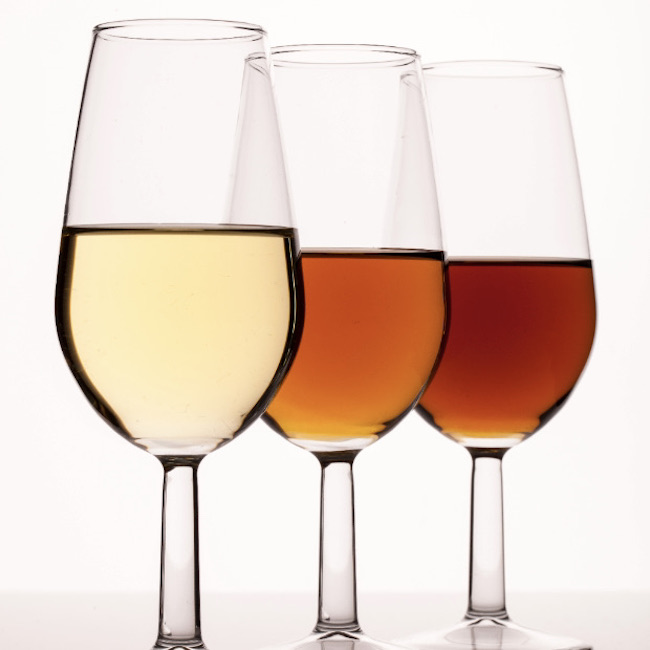.png.transform/rendition-xs/image_image%20(1).png)
Why America Is Intrigued By Spanish Wines
Sommelier and Wine Consultant Lucas Payá takes a look at how the US is paying more attention to Spanish wines no matter the region where they come from.
Many moons ago, I had just sat down to enjoy dinner in a restaurant in Barcelona with a very good friend of mine. I was about to order a bottle of wine (from a country I won’t disclose) when he abruptly exclaimed: “I don’t like wines from that country!” Back in the day, my friend was a very successful businessman, smart and well-traveled, but he was not in the wine industry, and he considered himself just an ‘average’ wine consumer. “How can you say that?” I replied. “How many have you tried?”, I asked. After some rumination, he seemed not to have much of an argument to sustain his abrupt statement. Sure, we all learn new stuff every day but, how many wines from a particular country (or region, based on their volume of production) do you need to assess before being sure you do not like most of them?

Spain has for a long time ranked within the top three largest wine producers in the world, usually behind France. Along with Italy, the three countries combined account for about half of the global production. On par with the other two, the reality is, there is much to try before one may consider him/herself a Spanish wine connoisseur. Spain shows a tremendous diversity and can produce virtually any type of wine. The fusion of varied climates, grape varieties, altitudes/latitudes, soils, and distances to oceans create, once again, a colorful patchwork of vineyards, and endless possibilities of wine profiles. If you add subtropical islands to the mix, the results are pleasantly overwhelming. What is the resemblance between a Tempranillo from Toro, a whole-cluster Galician red and a traditional Priorat DOCa blend? Or between Txakoli, Verdejo and white Rioja? Most of these are areas that distance too far apart from each other, experiencing broadly different climatic conditions. Plus, each of them may have their own set of rules for winemaking and styles. Trying to come up with a single all-embracing “Spanish flavor” to define these wines would seem rather simplistic. In that sense, are you someone who enjoys old-school traditions and age-driven nuances? We have a wine for you. Are you someone who prefers ripeness and power? We have a wine for you. Are you more into delicacy and lightness? Don’t look anywhere else.
A True Wine Revolution
Because what has happened in Spain’s wine field over the last three decades or so is a true revolution. We saw that in the early 90’s something started to shift, when the planet suddenly decided to change its taste for wine and demanded riper, fruiter, oakier and more extracted wines. That greatly impacted classic Rioja and opened a debate about what the wines from that region (and to an extent all Spanish wines) should drink like. At that time, Ribera del Duero was exploding with dozens of new wineries being established at record numbers. Also, during those days, we all started to rediscover Priorat. Shortly after, the Bierzo region experienced a movement along the same lines. We witnessed Valdeorras' recovery, the confirmation of Albariño as a world-class white, the rebirth of Ribeira Sacra and other fine reds from Galicia, the emergence of Vinos de Madrid, Islas Canarias, Vinos de Pago, Bobal and Monastrell from Levante… as all this occurred, leading producers across the country began to [re]pay more attention to the vineyard practices, while recovering local grape varieties. Today, more sensitivity toward moderate levels of both ripeness and oak usage, fermentation processes, and an overall low-intervention attitude are very apparent. More D.O.s are constantly refining their methods, ongoing improvement affects the whole territory, and ‘new’ areas will unquestionably come to light in the future.
And then we have historic sherry, that for me deserves a separate chapter, by the way one of the regions that is currently undergoing some fundamental adjustments. Is there any other appellation in the world offering more diversity than Jerez? We don’t think so. No matter what cuisine you champion, what ingredients you favor, what flavors you have fun cooking with, the versatility of these wines makes them excellent food-friendly alternatives. From the bone-dry, lighter finos and manzanillas to the exuberantly sweet and profound Pedro Ximénez (PX), and everything in between!

Here in the US, we are used to approaching wine in a particular fashion, and that is fine, but give me a chance to broaden your perspective: Do you like Malbec from Argentina? Now try Ribera del Duero. Do you enjoy Pinot Noirs? Taste Spanish high-altitude Garnachas or Atlantic Mencías. Are you a Chardonnay fan? Reach out for Godello from Spain’s north-west. Is Sauvignon Blanc your usual choice? Order a white from Rueda D.O. next time. And so on. Regardless of your personal preference, chances are you are going to find something out of Spain that pleases you. And if you just want to have fun, I would suggest blind-tasting Prestige Cuvée champagnes next to ‘artisanal’ cavas and the best Catalan sparkling wines… you may be nicely surprised!
As one may expect, and despite the devastating consequences of the enduring pandemic, American restaurants and wine bars have seen all this. Many top sommeliers, responsible for the most sophisticated and thoughtful wine programs, have been featuring some of the greatest expressions of all these redesigned Spanish styles. These establishments are playing a kind of ‘showroom’ role, and a trickle-down effect has been steadily hitting the consumers who attend them. Hopefully, we will continue to see an upward trend as restaurants all over the US become busier again, exposing larger crowds of guests to these more recently developed wine options, and the task of deciding whether one likes Spanish wines will have just gotten much harder.

